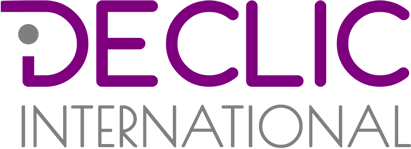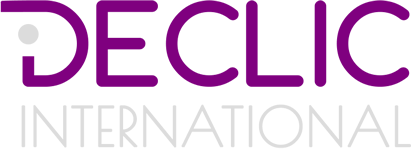6 barriers for disability inclusion (part 2 of 3)

This is the second part of a three-part blog series that explores disability inclusion: key concepts, facts, barriers and enablers. I’m focusing on what you need to know and to do in order to increase the well-being, engagement, and productivity of people with disabilities in your team, while improving the work environment for non-disabled people.
Today, we’re looking at six key barriers for disability inclusion.
1- A caricatural vision of people with disabilities
Most people associate disabilities with highly severe, permanent, congenital, and visible impairments—such as being in a wheelchair. As you could see above, the disability universe is very diverse. In fact, only two percent of disabled people are in wheelchairs and eighty percent of disabilities are invisible.[i] People also think that certain roles cannot be fulfilled by a person with a disability, or that you need to create specific roles for disabled people. In reality, it always depends on the person and the role. You can have paraplegia and be an acrobatic pilot, like the French pilot Dorine Bourneton. I’ve known a receptionist who was blind. I’ve met managers whose first reaction to my question about disabilities was: “It’s impossible to have a wheelchair in our construction work site” or “we have no roles for the disabled.” The irony is that, in many working sites, there are workers with back problems that could qualify as disabilities. This caricatural vision prevents people from even considering starting to tackle the subject. At the end of the day, most of us actually have some kind of disability, don’t we? Is anyone reading this wearing glasses?[ii]
2- Negative biases
Eight out of ten people in the UK state that there is a lot of prejudice towards disabled people.[iii] People often believe that disabled people are less productive, are slower to perform tasks, more absent from work and unfit for managerial roles. 75 percent of people think of disabled people as needing to be cared for some or most of the time.[iv] This suggests a degree of ‘benevolent bias’ impacting, in particular, the career development opportunities of people with disabilities. Interestingly, research shows that the higher the level of education, the stronger the negative biases towards disabled people.[v] Yet, surveys also show that 93 percent of employers are satisfied with their disabled employees.[vi]
3- Lack of team support
When a person in a team has a known disability, there might be the fear within the team of a lack of equity in the distribution of tasks, and of team performance decrease. I just came back from a manufacturing facility where this was a major problem. However, a survey showed that eighty percent of employees working with a disabled person didn’t feel any additional charge of work or decrease in performance.[vii] Disabled individuals sometimes feel the pressure to do better than non-disabled peers—almost in order to justify their existence and to prove that they are not a burden. Disabled individuals might also feel isolated when colleagues avoid contact, not knowing how to behave in the presence of a disabled new colleague or someone returning to work after an illness or an accident.
4- Difficulties to disclose
It’s difficult to disclose, because it can be difficult to accept in the first place, that we have a disability. Then, given all the negative stigma associated with disabilities, people with invisible disabilities fear the consequences of disclosing it. In France, for instance, 49 percent of people don’t disclose their disabilities.[viii] The problem is, if you don’t disclose, you can’t get financial support in case you need any adjustments. And your behaviours might be misunderstood as well. I’ve seen the case of an intern who had a hearing impairment and didn’t mention it. As she preferred written communications and didn’t interact, her manager thought she wasn’t enjoying her job experience and didn’t propose her a job. Surveys show that people with invisible disabilities are less satisfied at work than people with visible disabilities.[ix] Hiding a disability can be stressful, just like being in the closet for gays, lesbians, and bisexuals. And dangerous. I met a worker who developed a temporary eye problem. He could barely see anything, but kept coming to work and said nothing to his manager—for fear of losing his job. People who disclose their disabilities and get management support, free up emotional energy and become more productive.
5- Real and perceived physical barriers
A common reason given for not hiring people with disabilities is the fear of costly special facilities.[x] In fact, in 85 percent of cases, people with disabilities don’t need adjustments to their working environment.[xi] When adjustments are needed, often there’s a lack of in-house expertise on how to adapt or how to get government subsidies for such adjustments.
6- Lack of formal qualifications
Disabled adults, who were born with their disabilities, are nearly three times as likely as non-disabled adults to have no formal qualifications.[xii] This is a real obstacle to hiring disabled people, and the reason why many proactive companies support disabled people with specific training and apprentice programs.
***
Thanks for taking the time to read this post. Let me know what you think about it in the comments below!
This is an excerpt from one of the chapters of my book “Succeed as an inclusive leader – Winning leadership habits in a diverse world”. You can download for free the sample chapter “Supporting work-life integration” by clicking here. This article was published on my blog and on Huffington Post. To get my articles and updates directly in your inbox, sign up for my newsletter.
NEED HELP BUILDING INCLUSIVE LEADERSHIP SKILLS?
Contact me and find out about the Inclusive Leadership Think-tank, an innovative workshop that empowers business leaders to role model the leadership behaviours to drive inclusion and performance.
ABOUT THE AUTHOR
THAIS COMPOINT is a multiple award-winning author, speaker, trainer and consultant specialising in inclusion and diversity for the past 18 years. She helps organisations build inclusive cultures and diverse teams so that they can increase engagement, productivity, innovation and sales. She is the CEO of Déclic International, a global consultancy that she created in 2016, after having led the inclusion and diversity strategies of three Fortune 500 companies. She’s also the author of the book “Succeed as an inclusive leader”, a TEDx speaker, the founder of the 1s Inclusive Leadership Global Conference, and a regular Huffington Post contributor.
References
[i] Les stéréotypes sur les personnes handicapées, IMS, April 2011.
[ii] Catherine Brooks, “My disability is not always visible”: How to create an inclusive workplace for people of all abilities, December 2016
[iii] Disability in the United Kingdom 2016 facts and figures, Papworth Trust, 2016.
[iv] Disability in the United Kingdom 2016 facts and figures, Papworth Trust, 2016.
[v] Les stéréotypes sur les personnes handicapées, IMS, April 2011.
[vi] Réussir le recrutement d’un collaborateur handicapé, Agefiph, 2010.
[vii] Maya Hagege and Elena Mascova, Le handicap intégré à la gestion des ressources humaines, AFMD, June 2016.
[viii] Les stéréotypes sur les personnes handicapées, IMS, April 2011.
[ix] Employees with a visible disability report greater work satisfaction than those with a non-visible disability, Working mother, October 2016.
[x] http://www.disabledworld.com/disability/statistics/
[xi] Les stéréotypes sur les personnes handicapées, IMS, April 2011.
[xii] Disability in the United Kingdom 2016 facts and figures, Papworth Trust, 2016.



